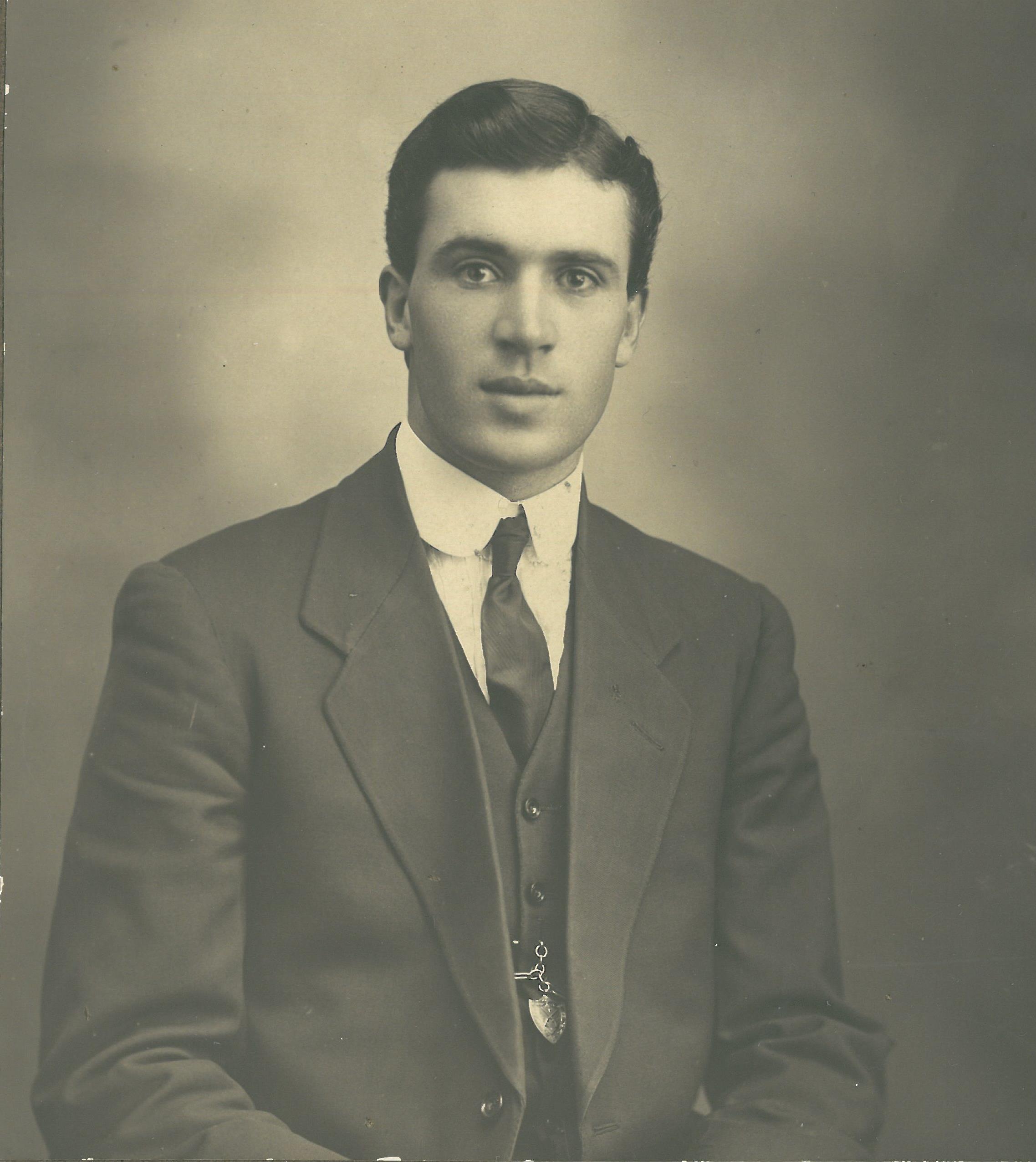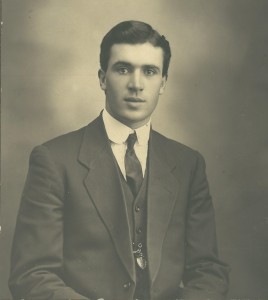Edgar Roy Stanford was born in Orange in 1893; the eldest of five sons of Adolphus Frederic Stanford and his wife Emily Eliza Stanford (nee Morgan). “Roy”, as he was known, attended Orange Public School, where he was in the Cadet Corps for four years. The family belonged to the Holy Trinity Church congregation, where Roy sang in the choir. In his youth Roy became a proficient horserider, tennis player and marksman; he was a member of the Orange Rifle Club, the Excelsior Tennis Club and the Wade Park Tennis Club. He was also a brother of the Manchester Unity Independent Order of Oddfellows.
Roy’s father was an Orange Council alderman who operated a successful business in Peisley Street as a grocer, ironmonger and produce merchant. Roy was employed as a clerk in his father’s business when he enlisted in August 1914. Upon hearing of his enlistment, the Dalton family offered Roy the pick of their stud horses to take with him to war; he chose a three year old gelding.
Assigned to the 1st Light Horse Regiment, Private Stanford and his mount proceeded to camp in Sydney, where Roy started a diary documenting his war experience. His first diary entry is dated 22 August 1914:
Left Orange 12 midnight. Arrived Sydney 11.15am. Dinner in town. Waited southern troops till 5.15 then rode to Rosebery Park. Tea 9pm. All tired.
The 21 year old embarked from Sydney on 20 October 1914 aboard HMAT Star of Victoria, arriving in Egypt in early December. A keen photographer, Roy took many photographs during his time in camp.
Roy’s regiment left Egypt on 9 May and landed in Gallipoli on 12 May 1915. Six weeks later Roy sustained a gunshot wound to the thigh, resulting in a compound fracture of the femur. He was evacuated to No 17 General Hospital in Alexandria, where Dr Neville Howse attended to his wounds, and the decision was made to amputate his shattered leg.
Private Stanford failed to recover from his injuries; he succumbed to complications following the surgery, and died on 1 August. His final diary entry was dated 23 July. It reads:
After a consultation by the doctors today, my own doc came and told me that I would have to have my leg off. Bad luck, but I am satisfied with his explanation.
Roy was buried at Chatby War Memorial Cemetery in Egypt (now Alexandria Military and War Memorial Cemetery). He was 22 years old.
Edgar Roy Stanford is commemorated on the Holy Trinity Church Orange Honour Roll. On Sunday 10 December 1916 some 1,000 people attended a service at the Holy Trinity Church during which Bishop Long unveiled a stained glass window in memory of Roy Stanford.
He is also commemorated on the World War I Roll of Honour on the southern face of the Orange Cenotaph.
On 25 April 1917 the second ever Anzac Day service in Orange was held at the Orange Public School. Mayoress McNeilly placed a laurel wreath on the Union Jack for each fallen soldier who had attended the school, including Roy Stanford.
In July 1917 Ald. Adolphus Frederic Stanford planted a tree at Orange Public School in memory of his son. It was one of 26 trees planted in honour of fallen soldiers who had attended the school.
In 1923 the Anzac Memorial Avenue of trees was planted along Bathurst Road to commemorate fallen WWI soldiers. A tree was planted in honour of “Tpr R Stanford”; it was donated by MUIOOF (Manchester Unity Independent Order of Oddfellows). Very few of the trees are still standing today.
Roy’s younger brother Albert Alan Stanford also served in WWI.
Private Stanford’s horse had been the envy of many a soldier, including George Tidex, who wrote to his father of his admiration for the mount. Following Roy’s death William Francis Johns took on his mount. The horse was with Johns for two years; in early 1918 it was hit in the chest by a piece of shrapnel.
In 2015 Roy’s great nephew, Scott Stanford, led the Anzac Day march in Orange wearing a replica Light Horse uniform and his great uncle’s medals. Mr Stanford led his stock horse Matilda at the front of the march with a pair of boots set backwards in the stirrups as a symbol of respect and mourning for fallen soldiers.
The Australian War Memorial has digitised images of Edgar’s diary, postcards and photographs.
Leader, 16 August 1915, p. 1.
The Last Post. Death of Roy Stanford
* Harris, Janice 2015, ‘Diary describes horrors of war’, Central Western Daily, 23 April p. 6.
* Stanford, Scott 2015, ‘May they live forever in our memories’, Orange City Life, 23 April 2015, p. 11.



